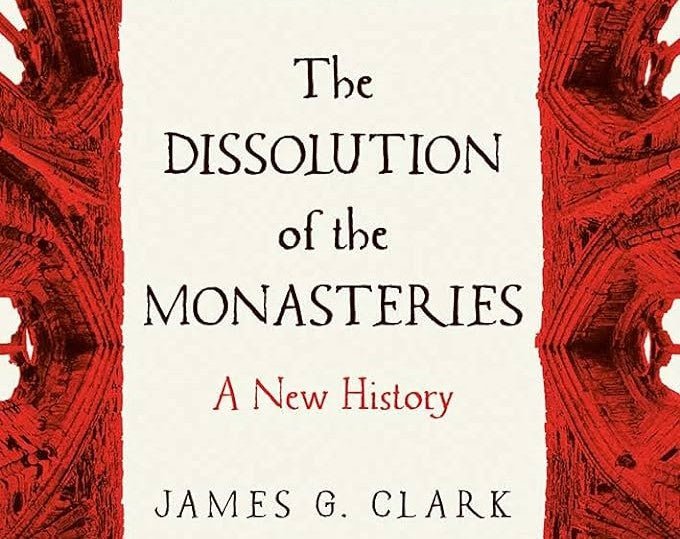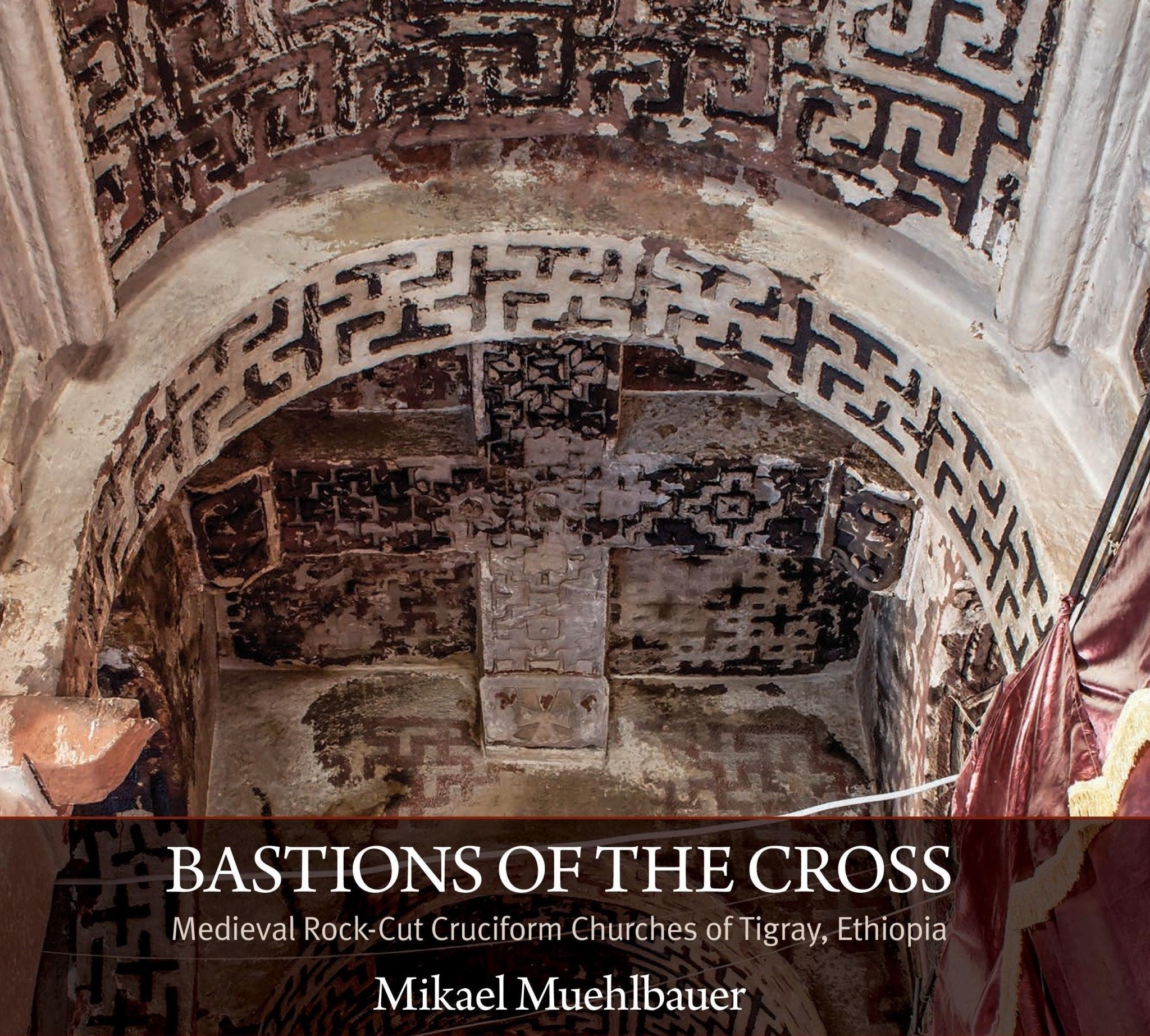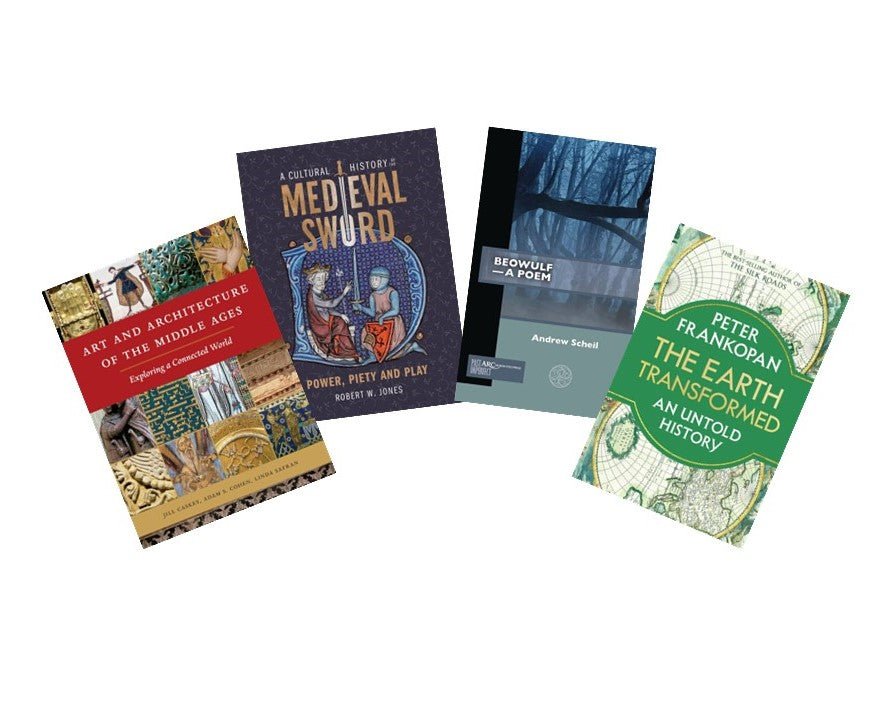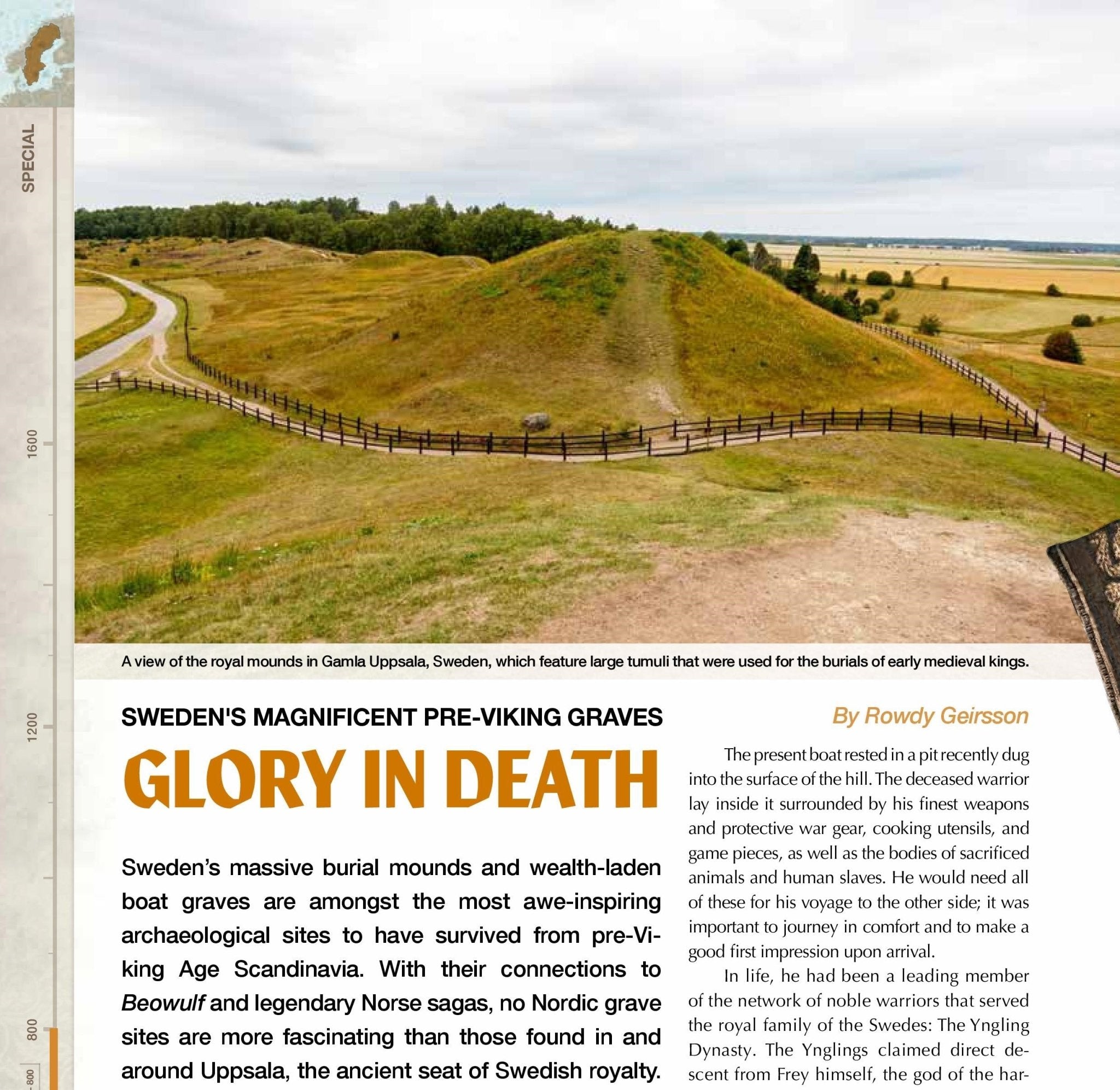The many versions of King Arthur - Episode 6 of the Medieval Warfare Podcast
Just in time for the latest movie about the legendary medieval ruler, we speak with Christopher Berard about King Arthur. From the earliest stories of how he would return from the dead to the role he played in medieval politics, the story of Arthur is one that continues to fascinate us.
Subscribe to the podcast via iTunes
Transcript of this episode:
Peter Konieczny: Hi. This is Peter Konieczny with the Medieval Warfare podcast. There’s a new movie about King Arthur coming up, so it’s a good time to talk about the subject. I’m joined here by Chris Berard. He has a PhD in Medieval Studies from the University of Toronto, and he’s been working on King Arthur and the political importance of it. First, how did you get interested in King Arthur?
 Christopher Berard: That’s a great question. When I was quite young, I would say five to seven, my dad took me to Higgins Armory in Worcester, Massachusetts, which sadly is no longer with us. Their armor collection I think has been relocated to the Worcester Art Museum. He bought for me the Usborne Picture Classics Adventures of King Arthur, which was purchased – I happen to have it with me – for $3.95. I know that you can still buy this in a new cover, in a new edition. It has a lot of great artwork. Basically it outlines the story of Mallory. At that early age, and then through I guess multiple viewings of Monty Python and the Quest for the Holy Grail, I was hooked. I always liked the story of King Arthur. I was always fascinated by kingship. I guess it was something that grabbed onto me at quite a young age.
Christopher Berard: That’s a great question. When I was quite young, I would say five to seven, my dad took me to Higgins Armory in Worcester, Massachusetts, which sadly is no longer with us. Their armor collection I think has been relocated to the Worcester Art Museum. He bought for me the Usborne Picture Classics Adventures of King Arthur, which was purchased – I happen to have it with me – for $3.95. I know that you can still buy this in a new cover, in a new edition. It has a lot of great artwork. Basically it outlines the story of Mallory. At that early age, and then through I guess multiple viewings of Monty Python and the Quest for the Holy Grail, I was hooked. I always liked the story of King Arthur. I was always fascinated by kingship. I guess it was something that grabbed onto me at quite a young age.
Peter: You went to the University of Toronto to get your PhD and you worked on your thesis. What kind of the topic of your work?
Chris: Well, this work really began at the end of my undergraduate studies at Providence College. So I did a paper on Isabelle of France and I was exploring her life, who is the mother of Edward III. I was also taking another class on folklore and superstition at Providence College. I was fascinated by what folklorists call ostension, which is the use of either a realistic story, it could be fictional but it has to be realistic fiction, or historical accounts as a model or a script for human behavior. So the idea is fiction can become reality. An example of that would be for instance on a negative level copy-cat crimes. You’ll see a news story about a certain incident occurring, and then that becomes the model for copy-cat burglaries or what have you. So it’s an interesting topic because it shows the significance of literature or even film as impacting human behavior. Of course we always have these discussion about are the video games that our children are playing, are the movies that they’re seeing shaping their behavior, how they interact with others. So that as a theme or as a topic was always very interesting to me, and the Arthurian passion was still with me. So when I was taking the folklore course and when I was studying Isabelle of France, I discovered Jonathan D’Arcy Dacre Boulton’s book on The Knights of the Crown. I found out about the Order of the Garter, and that fascinated me. So when I came here I had that information in my mind and I was wondering why if Edward III initially planned to establish an order of the round table, which he did in January of 1344 – that was his plan. That was his announcement. Why he moved away from that eventually and established the Order of the Garter? So those questions kind of were with me when I was applying to come here and when I came here, and through good fortune when I came here as an MA in September of 2007 I took a class on Wace’s Roman de Brut, which is the first vernacular, possibly the second, but an early vernacular translation of Geoffrey of Monmouth’s History of the Kings of Britain. I got to work with the biography of Arthur. So a combination of interest and good luck, good fortune brought me into the topic.
Peter: King Arthur as a topic is a person that gets emulated a lot during the middle ages. He’s especially in English royal circles. How influential is he in the kind of whole story with medieval warfare and how it gets practiced?
Chris: That sort of question has been the focus of much of my research. The first use of King Arthur as a model for imitation, obviously it seems to have taken place after Geoffrey wrote his history, which was in 1137. It really began with Henry II. So returning to Wace, a year after Henry took the throne of England, Wace wrote the Roman de Brut and his representation of Arthur was modeled after Henry II. There were other texts that have that sort of tendency. Even Geoffrey of Monmouth’s text has a lot of elements of William the Conqueror and Henry I as sort of a source material for the depiction of King Arthur. Now, those were not the only models, but you have historical figures as sources of inspiration for the depiction of Arthur. Then what that allows for is it allows for later historical people to imitate Arthur. So when you’re imitating Arthur, or when say Henry II or any of his successors are said to imitate Arthur, whether consciously or unconsciously to a certain extent they seem to be imitating their own forbearers like Henry I. so there’s a lot of interplay, life imitating art and art imitating life, which is sort of what I was talking about with the ostension phenomenon. So there’s this really rich interplay. Of course when Geoffrey or Wace were writing about Arthur, they represented Arthur in such a way that he would very much appeal to the political interests of these kings. For instance Arthur was said to have been the Rex Totius Britanniae, the king of all Britain. So what does that mean? What that means is the post-conquest king of England is entitled to rule over Wales, is entitled to rule over Scotland, and is entitled to rule over Ireland and actually frankly much of Europe. So it’s long been argued that this was sort of an aspirational model for these kings, and an aspirational model in which some of their own qualities and the qualities of their more recent ancestors were present. So it was to a certain extent not just aspirational, but to a certain extent achievable as well.
Peter: One of the interesting things I was looking at your research is the idea that King Arthur would return. It’s something that kind of emerges fairly early when we look at the literature. In the 12th century you have a person who’s like, “Arthur’s going to come back,” and things like that. He’s this model, and I guess a figure to look up to, but also someone believed that he is physically present, will be physically present.
Chris: So you have put your finger on a very critical question in the Arthur myth. You’ve touched upon something that’s very much part of the appeal of the figure, and also potentially a problem, that problematic aspect of the figure. So there is an ongoing question about how old is the myth of King Arthur’s return. I published an article in Arthuriana in 2016 that looks at some of the earliest known references to the myth of King Arthur’s return. So the two contenders for the earliest account of King Arthur’s return are William of Malmesbury’s Deeds of the Kings of England, and the other account comes in Herman of Tournai’s Miracles of our Lady of Laon. The Deeds of the Kings of England was written in the vicinity of I believe 1125, 1126 William of Malmesbury writes about it. He mentions that the trifles of the Britain’s say that Arthur will come back. And then Herman of Tournai is talking about this and he gives a story about these cannons of Laon. After their cathedral has been burned down – the bishop wasn’t very popular so the people got angry. After the cathedral was burned down they did a relic tour. They had relics of Our Lady of Laon. They went through France and then they went through England and Cornwall in 1113.
Peter: That’s to help fund-raise?
Chris: It’s a rebuilding project, yeah. So they would travel and you could kiss the relics and the story has it that some healing occurred. Then there’s a narrative of this relic tour from 1113. The narrative that survives, the version that survives by Herman of Tournai comes from 1142. So the question is, this narrative that mentions Arthur’s return… Let me tell you a little bit about that for a second. The story is that the canons traveled through Moor, which is between Devon and Cornwall. They stayed at this sort of tavern. They come to a man with a withered hand who is seeking healing. For some reason according to the story he claimed that Arthur would return, and then the canon weren’t happy with this because the idea is that the only one who’s returning is Jesus Christ until Judgment Day. So this is theologically problematic, to say the least. So then this caused a fight in the tavern. There was a threat of violence. And then someone came forward and stopped the fight, an ecclesiastical figure who would attain some renown later on in the 1130s. Then the man with the withered hand who was sort of the cause of the fight did not receive healing for his hand. What people haven’t noticed is that in the gospels there is a story of Jesus saving a man with a withered hand. Of course, he performs this on the Sabbath and gets into the Pharisees aren’t happy about that because he’s doing healing on the Sabbath. So the idea is maybe this figure is not receiving healing because his faith is misplaced. He cares too much about Arthur and holds to beliefs that are not strictly-speaking Christian about Arthur. So the question is, does that story really authentically date from 1113, or does it date from the 1140s as a rewriting of the event. The question becomes critical because aside from this narrative our earliest account is William of Malmesbury from about 1125, then we have of course Geoffrey of Monmouth who’s writing in 1137. Of course after Geoffrey is writing 1135 to 1137, there’s a huge boom in Arthurian interest. So the time, the dating, those years do matter. So I called attention to this element and the possible connection it has to the Bible, which hadn’t been noted. There’s also a re-writing that takes place. The person who stops the fight, like I said, becomes significant in ecclesiastical circles. So we can tell that our author, Herman of Tournai was writing retrospectively. He mentions that this figure becomes politically significant or ecclesiastically significant.
Peter: You’re wondering where the chronicler is going, the writer of this work. Where is he going in bringing up this story? There seems to be lots of elements.
Chris: My understanding, my thought on the matter is it’s a timely work. He’s very much writing in 1141, 1142. I think he’s very much responding to this boom of interest in Arthurian literature that comes after Geoffrey. He might be saying, you know guys, your attention should really be, much like Augustine with respect to the Aeneid, you shouldn’t be crying for Dido and these other great stories of antiquity. Your focus should be on the passion and on religious subject matters. So I really think that he’s doing that. Which means that our earliest written evidence of the myth of King Arthur’s return comes from William of Malmesbury in the 1120s. So it might not be this really – and the important thing to note here is that William of Malmesbury is not a Britannic Celt. So it’s always something that’s said about the Britannic Celts that they believe in Arthur’s return, that they’re clinging to him as a messianic figure. We don’t really have very, very early evidence of this. We might want to find it in a text like Nennius. Nennius doesn’t talk about Arthur returning. He’s a great general. The Annals of Wales say that Arthur fought and fell. He’s dead. He’s gone. He’s a great general, but he’s gone. So that’s sort of the question. But returning to your essential point, the idea of Arthur’s return, how do we interpret that? Will he physically rise from some state, like a state of sleep? Like the Seven Sleepers of Ephesus? Or is there going to be something like a reincarnation of Arthur? Is this symbolic? Is this figurative? Is it typological? The kings of England really were able to kind of play upon themselves as being successors, later Arthurs, in sort of a typological way. So that was the combination of this prophecy of Arthur’s return combined with the political desirability of the figure, this great conqueror who conquered all of Britain and much of western Europe was very appealing to these Plantagenet kings.
Peter: One thing we have to bring up is how Arthur changes for different kind of ages, even in the middle ages. It’s something people might notice if they’re watching all the various King Arthur movies. Arthur is always a figure whose values and stuff like that represents our modern culture. Arthur being a hero, but being a hero to us. In the next movie that’s coming out he’ll be a hero. He’ll have certain qualities that we in 2017 we find. And then earlier movies have the same kind of take. Arthur for us he’s a figure that’s constantly changing, but even in the Middle Ages he’s a figure that’s constantly changing. You say you have this boom in literature that happens at the 12th century and that continues on. There’s all sorts of kinds of Arthurian tales. Why do you think he was such a figure that could be used by so many people and have such a value?
Chris: Whether Arthur lived, whether he even existed, whether he’s even a historical figure is debated. So his historical footprint is minimal. But there’s enough there to suggest that there might have been an Arthur. So just enough to make him believable. Now, of course figures like Alexander the Great and Charlemagne were rewritten and represented in a variety of different ways, but we know a lot more about them. So we are, and I believe the medieval individuals, were perhaps more aware of when they were steps away from what you might call canon or the historical footprint with those sort of figures like Charlemagne. With Arthur, who he is and what he was, there’s not a clearly defined physical representation of Arthur or a definite image of the king. So he’s very flexible. He’s a malleable figure. In the tradition we see a bunch of different Arthurs. In fact, he is very much the generic king. So he could be a great warrior king, a dux bellorum, a battle-leader. He could be a do-nothing king which is what we see him in many of the romances as – particularly the romances of Chretien de Troyes. So he goes in different ways. So if he has that sort of generic kingship quality, he can represent the best of kings or potentially the worst of kings. I think there were certain texts that you might consider to be like canon with him. I think that Geoffrey of Monmouth definitely created a chronicle tradition, definitely made an imprint on what Arthur was. And then at the end of the Middle Ages, and ever since the Middle Ages in may ways, the model has been Mallory. Sir Thomas Mallory’s Arthur is the narrative of Arthur. We seem to be sort of locked in many ways into kind of the re-telling of that narrative. There of course have been some steps away from it. Spenser moved away from that when he wrote the Faerie Queene. His Prince Arthur steps away from that. That BBC Merlin’s Arthur takes a lot of license with that. I suspect that the new Guy Richie film – I can tell you that the new Guy Richie film from what we’ve seen already is moving away from that. So there is that sort of occasional tendency to move away, but none of these new versions tend to really have that powerful, canon-like quality. But even within the established tradition there’s a lot of flexibility in representation. The political goals associated with the king or his goals or what he accomplished, are somewhat set. So the character of the king isn’t necessarily set, but the goals are. He seems to be by and large an accomplished king. He’s a king of great renown, but it’s very flexible. Of course, in medieval narrative there’s a great deal of anachronism, right? That’s a constant. You’ll see Biblical stories or classical stories in which these classical or Biblical figures have contemporary, or then contemporary dress. They wear suits of armor. So that was already sort of a given tendency. So Arthur can slide right into that. he’s malleable, he’s amorphous.
Peter: He’s influential but he can be influenced, right?
Chris: Of course.
Peter: Just before I go, just to ask you about other works that you’re working on and dealing with Arthur, where is your research leading you to?
Chris: So, my earlier work, the first few pieces I’ve done concerned Edward III and the Order of the Garter and that relationship. One of the things that I found there is there was a believe that after the Order of the Garter was established that was an abandonment of the Arthurian model completely, by Edward III. And I found a subsequent reference to Edward III being involved in a round-table game after the battle of Poitiers when he had the good King John the second as a prisoner. So the relationship between the Order of the Garter and the Order of the Round Table, there might have been some room for a lot of Arthurian imagery in the Order of the Guard. But at the same time, Edward III did not restrict himself of confine himself in any way to necessarily upholding this literary ideals of Arthur, necessarily always using cavalry warfare and things of that nature, so the higher standards. You could use mercenaries and he could engage in something approximating total warfare without necessarily being judged against it. of course there’s a lot of scholarship out there from the mid to late-20th century which argues that the nastier, more negative depictions of Arthur in the alliterative Morte d’Arthur take on some of the qualities of Edward III. I think the analysis of that reading, that historic reading is accurate. What I’ve been working on right now is writing a history of the political use of King Arthur from the time of Henry II to the time of Edward I and tracing that development and that evolution. So that’s the big project that I’m hoping to complete and bringing to a book very, very soon. So that’s my present work.
Peter: I just want to say again, thank you for being my guest here and good luck. It’s a fascinating topic. I don’t think you’ll ever run out of things to say.
Chris: There’s a lot. I do hope to bring this study up to the present day. We talk about John F. Kennedy in Camelot in the 1960’s. There’s so many more examples. Who knows – there may be some new Arthurs coming on the scene very soon. Who knows? So thank you, Peter, for inviting me to have this conversation with you.
Our thanks for the transcription from Kabro Co.
The Medieval Warfare Podcast is hosted by the History Network




